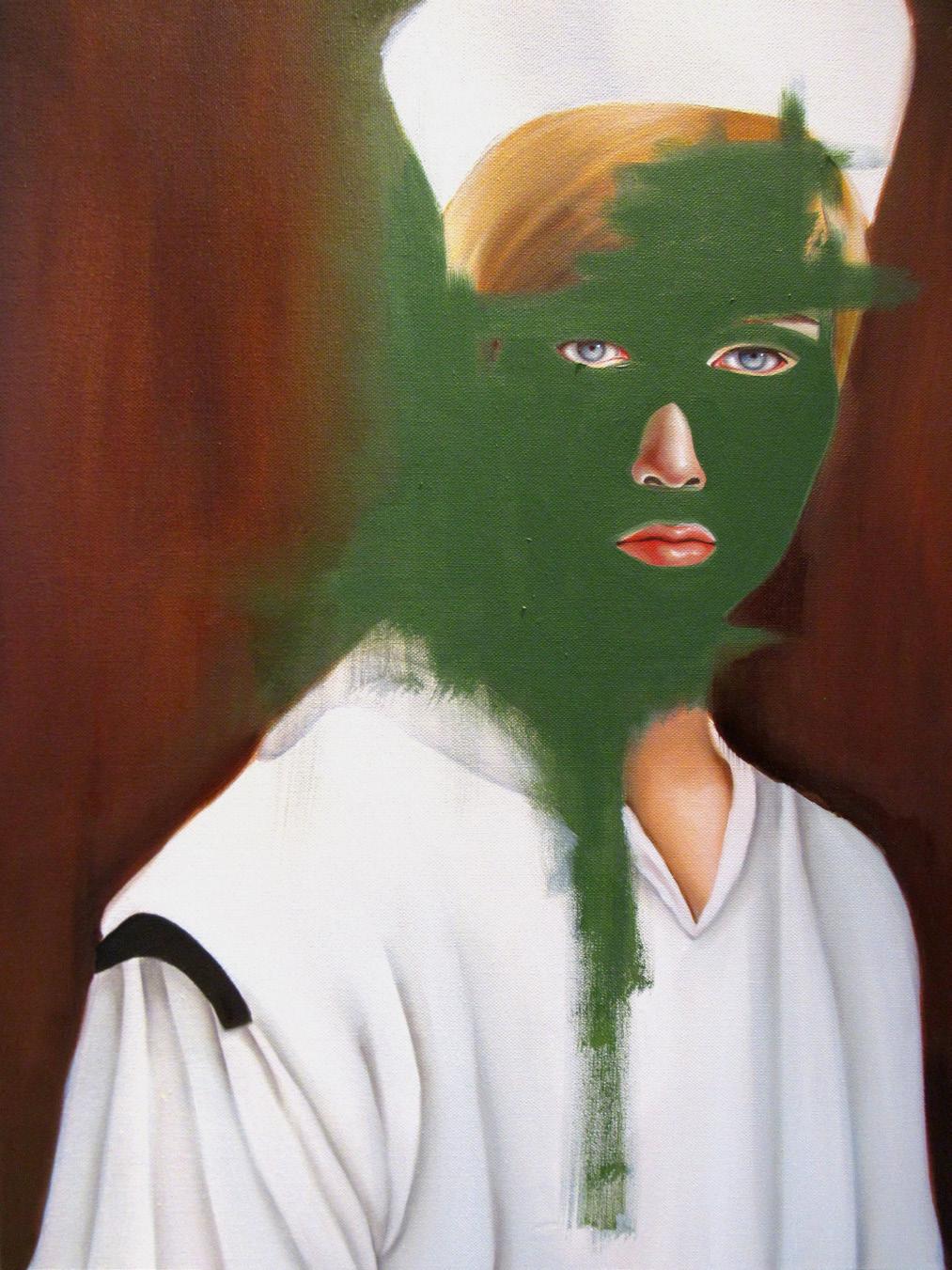KAITLYN WALLACE
If Mother Mary grew up in Vegas in the early 2000s what would she look like? According to Nevada-based painter Kaitlyn Wallace, she would wear a corset, fake eyelashes, and a whole lot of makeup. Wallace was raised amongst the dashing lights of Sin City, exposed to a culture of excess and vices. Educated in Catholic schools, she struggled to reconcile the model of piety and unblemished innocence she was taught to emulate with the brazen allure of the city’s ubiquitous entertainment and adult industries. “On the way to school, you see a lot of billboard ads for gentlemen’s clubs,” she says. “You get so many messages on what it means to be a woman. You grow up seeing that and you think this is the way to get attention.”
Wallace’s dolled-up Virgins incarnate the impossible ideal of the prostitute saint. Women feel compelled to play a polarizing role, which precludes them from being who they really are. Wallace addresses this predicament through the use of over-dramatized iconography. Her Madonnas, beautiful in their cotton-candy hair and laced outfits, pose like martyrized pinups. Chastised for overindulgence, they shed fat tears of guilt on cheeks red with shame. By combining non-natural color palettes with traditional Baroque techniques, Wallace examines how the objectification of women has pervaded art history and continues today. All she wants is to be free of the cages erected by society, to show her true identity, and simply exist.
Wallace has a Bachelor in Fine Art from the University of Oregon. She held solo exhibitions in Eugene, Oregon, at Foyer Gallery and Washburn Gallery in 2020, and participated in group shows in Los Angeles and Eugene, Oregon. She received a special recognition for excellence in art in the 9th Annual “All Women” Online Art Competition from the Light Space & Time Online Art Gallery. Wallace remains in Las Vegas where she runs a small art decor and crafts business.


 KAITLYN WALLACE ON
KAITLYN WALLACE ON

 Cicada, 2019
Oil on canvas
24” x 18”
Cicada, 2019
Oil on canvas
24” x 18”












I am interested in making art that facilitates conversations around freedom, autonomy, futility, and suffering. Growing up in Las Vegas and attending Catholic school, my influences surrounding womanhood were polarizing. Whether it was at church or on a billboard, representations of women were an overwhelming object of my environment. By appropriating Christian iconography and combining it with the hyper-sexual aesthetics of Las Vegas, I create oil paintings that reflect and further complicate ideologies related to the body, social conditioning, and self-realization. Under the established patriarchy, navigating the boundaries between objectification and subjectivity can be muddy and confusing. I want to expand this conflict between who we are and who we are conditioned to be, and shamelessly transcend these binaries.
I choose to stylize my portraits and figures to play with objectification and the elusiveness of idealized beauty. I combine non-natural color palettes that demand attention, with traditional Baroque techniques, such as diagonal compositions and chiaroscuro, to push and pull sensations of familiarity, history and modernity, and to examine how the objectification of women has pervaded art history and continues today. I want my art to question how we exist in spaces that aren’t designed for us, and to consider the dynamics between agency and environment.


